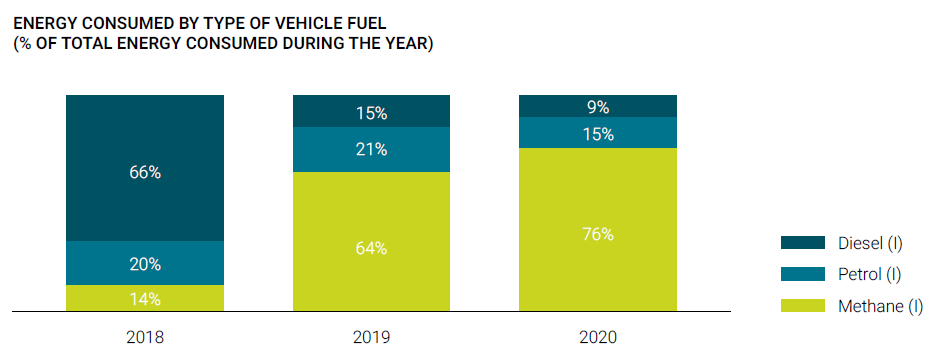We note that in plants in which these optimisation systems have been installed, the specific consumption reduced by approximately 21% from 2019 to 2020, whilst in the other IPRMs, only a small reduction was seen, connected with the other improvements made, such as, for example, replacing boilers with new models.
Instead, if we consider only the IPRMs in which these optimisation systems are installed from 2019 to 2020 (for which a reduction is recorded in consumption for preheating of approximately 319,000 Sm3), it has been estimated that the increase in efficiency obtained by these systems equates to a saving of approximately 250,000 Sm3 (corresponding to approximately 500 t CO2 in emissions avoided).
Also considering the works carried out in previous years, at the end of 2020, there were 99 IPRMs with preheating that make use of preheating consumption optimisation systems. In 3 of these plants, experimentation continues of a thermal plant management system that also includes a gas-powered heat absorption pump.
In 2021, the campaign for the installation of the new pre-heating system will continue in the other IPRMs.
- reduction of grid losses, thanks to the 2020 use of a new scheduled natural gas fugitive emissions leak detection method, based on data collected using the Cavity Ring-Down Spectroscopy (CRDS) Picarro technology. The technology has a sensitivity 1000 times higher than the traditional system, and the related emissions calculation constitutes a more solid, robust evolution of the estimated parametric emissions – used previously – both in application terms and in respect of calculation. The new method is based on the determination of the flow of the individual gas fugitive emissions, as the result of in-depth analysis on big data collected following scheduled leak detection activities, carried out throughout the networks with CRDS laser spectroscopy technology. The accuracy and solidity of the instrumental method are guaranteed by the possibility of:
- localising, classifying and precisely quantifying both the most significant and influential gas emission sources (super emitters) and the smaller ones;
- quantifying the expected benefits/improvements, in view of targeted grid maintenance initiatives;
- prioritising grid renewal interventions with a view to reducing the effects of gas leaks and ensuring an appropriate cost/benefits balance.
In order to obtain a value that is as complete as possible, in calculating the losses, leaks reported by third parties were also considered, taking into account the average daily volume of losses identified by the CRDS method and a maximum repair time of 48 hours.
In 2020, for the first time, use of CRDS technology was extended to the whole network (in 2019, 26% of the network was inspected with this technology), considering the spot value of emissions associated with each leak detected in the calculation and taking into account the effective repair dates.
In 2020, total fugitive emissions of the Italgas Group48 came to 8.46 million Sm3 and the gas leakage rate (calculated as the ratio of natural gas leaks and gas distributed) is 0.1%.
Below is the table showing the fugitive emissions and some reference KPIs, the data of which refers to the companies consolidated by the Group.

